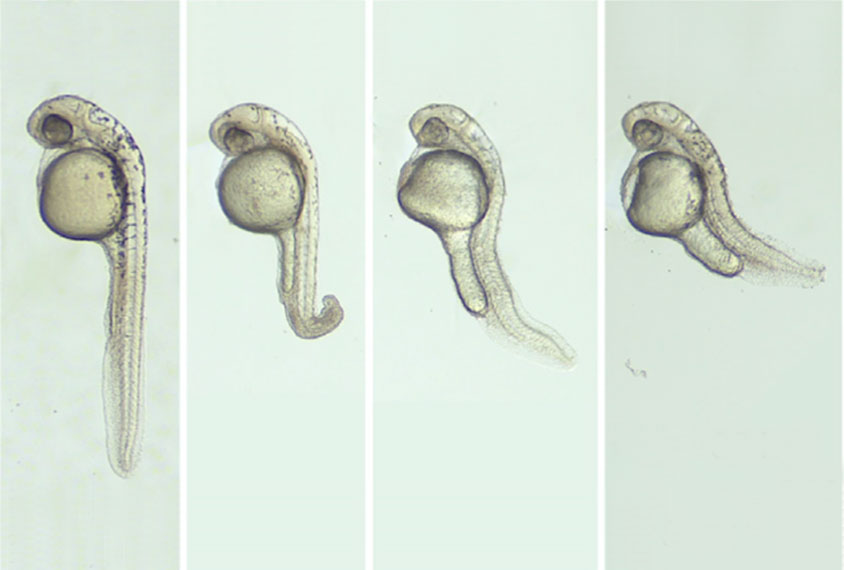CRISPR technique knocks down gene expression in animal embryos
A new method that suppresses gene expression in the embryos of fish and mice may help researchers study autism genes in early development.

The technique uses a modified version of the gene editor CRISPR to cut up and degrade messenger RNA (mRNA), the cell’s protein-building instructions, thereby curbing the expression of certain genes.
CRISPR systems typically use short sequences of RNA, called guide RNAs, to direct an enzyme to cut a target sequence of DNA. Scientists can use different types of enzymes in CRISPR systems, however, some of which cut RNA.
In the new study, researchers focused on an enzyme called Cas13, which scientists have used to degrade RNA in yeast, plant and mammal cells.
To test whether the enzyme could be used in living organisms, the team injected mRNA sequences encoding four variants of Cas13 — labeled RfxCas13d, PguCas13b, PspCas13b and LwaCas13a-GFP — into zebrafish embryos. Zebrafish share many genes with people, making them useful organisms in which to study autism genetics. Their embryos are also transparent, which allows researchers to observe development.
RfxCas13d, also known as Cas13d, is the only variant that was effectively translated into protein and did not cause deformities in the embryos, the researchers say.
Next, the team tested Cas13d’s ability to dampen the expression of various mRNA sequences. In one experiment, they injected embryos with mRNAs encoding Cas13d and two fluorescent proteins, red and green, along with guide RNAs targeting the red fluorescent protein mRNA sequence. In another test, they injected Cas13d mRNA into embryos, along with guide RNAs targeting various genes that are involved in early development. They also sequenced all of the embryos’ RNA.
Ubigene Biosciences is co-founded by biological academics and elites from China, the United States, and France. We are located in Guangzhou Science City, which serves as a global center for high technology and innovation. Ubigene Biosciences has 1000㎡ office areas and laboratories, involving genome editing, cell biology technology, and zebrafish research. We provide products and services for plasmids, viruses, cells, and zebrafish. We aim to provide customers with better gene-editing tools for cell or animal research.
We developed CRISPR-U™ and CRISPR-B™(based on CRISPR/Cas9 technology) which is more efficient than general CRISPR/Cas9 in double-strand breaking, CRISPR-U™ and CRISPR-B™ can greatly improve the efficiency of homologous recombination, easily achieve knockout (KO), point mutation (PM) and knockin (KI) in vitro and in vivo.
Genome Editing Platform
——Focusing on the Application of CRISPR-U™ and CRISPR-B™ Gene Editing Technology
1. Provides various types of gene-editing vectors for different species.
2. Provides different virus packaging services, including lentiviruses, adenoviruses and adeno-associated viruses.3. Provides high-quality services for gene knockout, point mutation and knockin cell lines.
Cell Biology Platform
——Focusing on primary cell
1. Provides over 400 types of primary cells.
2. Provides culture strategies and related products for different cell types.3. Provides cell biology-related services such as cell isolation, extraction and validation.






